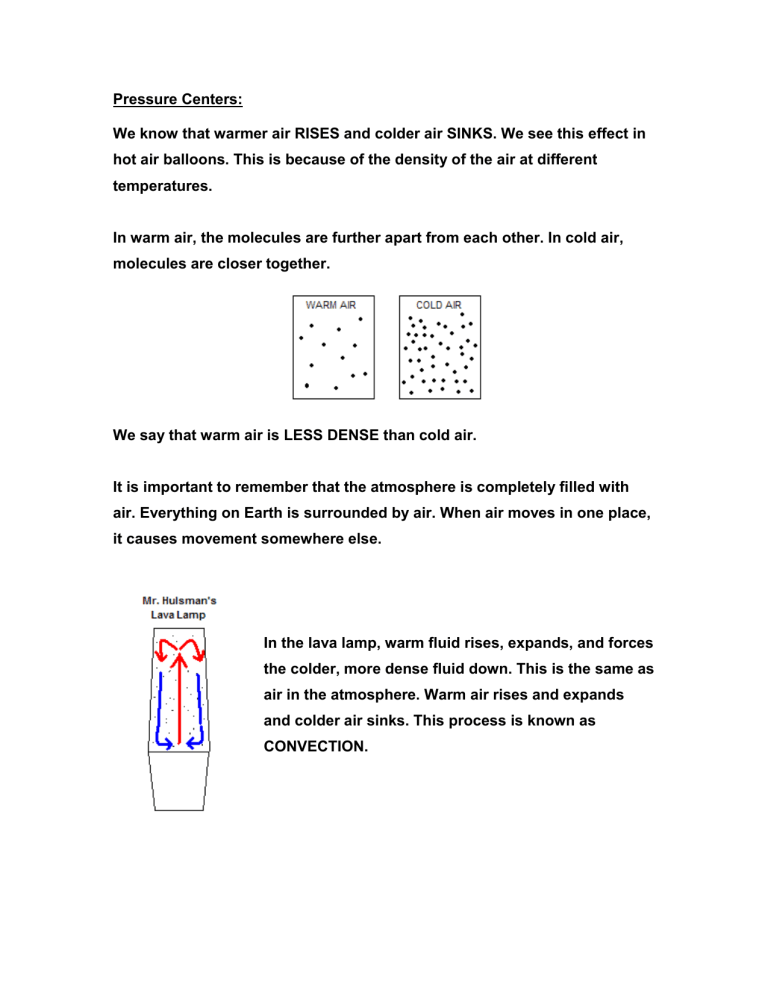Pressure Centers:

Pressure Centers:
We know that warmer air RISES and colder air SINKS. We see this effect in hot air balloons. This is because of the density of the air at different temperatures.
In warm air, the molecules are further apart from each other. In cold air, molecules are closer together.
We say that warm air is LESS DENSE than cold air.
It is important to remember that the atmosphere is completely filled with air. Everything on Earth is surrounded by air. When air moves in one place, it causes movement somewhere else.
In the lava lamp, warm fluid rises, expands, and forces the colder, more dense fluid down. This is the same as air in the atmosphere. Warm air rises and expands and colder air sinks. This process is known as
CONVECTION.
Rising, warm air results in an area of LOW PRESSURE because the air is rising up and leaving empty space behind. When a column of warm air rises, air from all around it moves towards the column to fill in the gap.
This is called a LOW PRESSURE CENTER.
Low Pressure Center:
Rising warm air leaves a LOW
PRESSURE area. Surrounding air moves in to take its place. This system is called a CYCLONE.
High Pressure Center:
Sinking, cooler air creates an area of
HIGH PRESSURE. As the air sinks it moves outward to areas of lower pressure. This is also known as a HIGH
PRESSURE CENTER, also called an
ANTI-CYCLONE.
Due to the rotation of the Earth, winds are “bent” or curve as they move across the planet. This is known as the CORIOLIS EFFECT.
Because of this, winds do not move in straight lines into low pressure areas and out of high pressure areas.
Without the Coriolis Effect, winds would move in straight lines from high to low pressure.
With the Coriolis Effect, we can see that winds actually move in a rotating manner around centers. In the Northern Hemisphere, low pressure systems have COUNTER-CLOCKWISE winds. High pressure centers have
CLOCKWISE WINDS. These are exactly opposite in the Southern
Hemisphere. (Remember the right hand rule.)
High Pressure System:
High pressure systems have cooler air sinking in the middle.
Air moves OUT FROM the center.
Winds curve due to Coriolis Effect and the system rotates CLOCKWISE
Low Pressure System:
Low pressure systems have air RISING in the middle.
Air moves INTO the center.
Winds curve due to the Coriolis Effect and the system rotates COUNTERCLOCKWISE.











